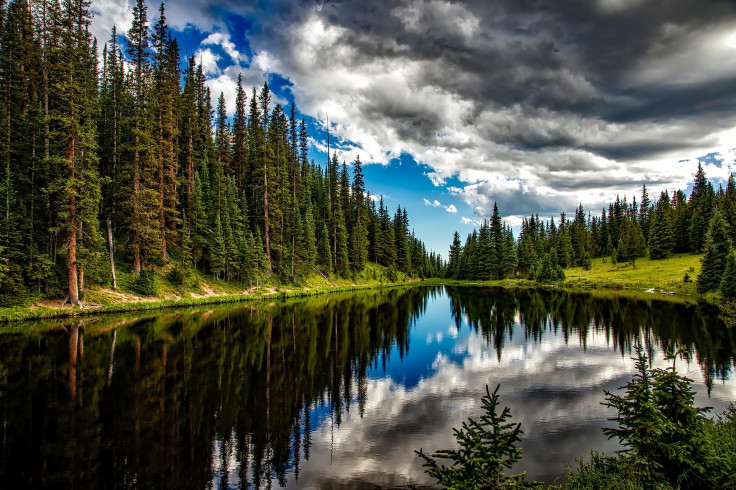What Do Dinosaurs And An Asteroid Have To Do With An Earthquake In Colorado?

If you were living in Colorado during the time of the dinosaurs, you probably would have felt the final blow that helped end their reign and bring on their extinction — an asteroid impact that rocked the Earth.
Research at the Seismological Society of America’s annual meeting suggests certain geological evidence shows the asteroid’s crash near southern Mexico’s Yucatan Peninsula “could have generated massive seismic waves that triggered earthquakes as far away as Colorado, in the center of a tectonic plate where no previous fault had existed.”
Read: What Do You Know About Dinosaur Sex?
That evidence includes a layer of an element called iridium lying between Cretaceous-period rocks on one side and Tertiary rocks on the other — putting its age in the neighborhood of 65 million years. That iridium layer between the rocks formed as a result of the asteroid’s impact, which occurred that amount of time ago.
The researchers made the discovery at Trinidad Lakes State Park in southern Colorado, near the border with New Mexico.
According to the study, the seismic waves rumbling Earth after the asteroid collision would have been far more powerful than the kind we see after a regular earthquake, and would have made its own quakes and “caused ground damage.” The earthquake that likely reached Colorado, the researchers estimate, would have been about a magnitude 6.
Read: This Large Asteroid Is Headed for Earth
The U.S. Geological Survey roughly rates that as a strong earthquake. In today’s world, such a tremor would do little damage to well-designed buildings but would do more damage to others and would break some chimneys, in addition to moving furniture, toppling some objects, perhaps breaking windows and frightening people. The walls may sound like they are cracking and there would be a “sensation like [a] heavy truck striking [a] building.”
But back then, rather than having buildings and people, Colorado “was a swampy, delta-like environment, crossed by large braided streams that ran from the young Rocky Mountains,” the Seismological Society of America said.
After the asteroid impact, “the ground would be moving up and down and sideways like a ship in a strong storm,” Stanford University’s Norm Sleep explained in the society’s statement. That force was enough to change the direction of a small stream in the Colorado area they studied.
See also:
Prehistoric Climate Change Caused 3 Mass Extinctions in a Row
© Copyright IBTimes 2024. All rights reserved.





















